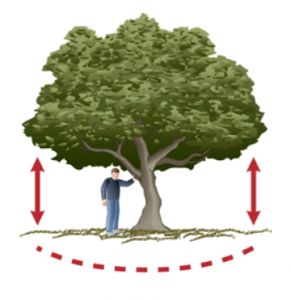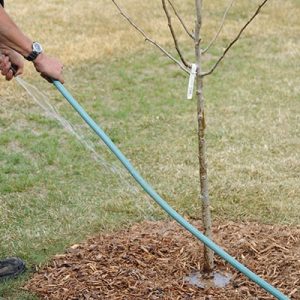It’s natural to be concerned for our shady friends in this scorching heat. Rest assured they’re pretty tough, but you can help them weather the drought.
It’s a question that comes up during any prolonged drought. How can I help minimize stress for big established trees during high heat and lack of rain?
The size of trees like live oak, cedar elm and even pecan proves they’ve survived drought many times before. Their expansive roots give them access to water even after the surface dries out. But after a long summer without rain, it’s natural to be a little concerned for our favorite trees.
On the bright side, the most important time for tree watering each year is in spring, from February to May, when they’re growing new leaves. In 2023, our trees received plentiful water at just the right time.
Of course native trees have evolved to expect very little water in summer. But there are certain things we can do to help our leafy friends survive in summer when it hasn’t rained for months.
One of the easiest things to do is to keep them mulched. Apply no more than 2 inches and avoid touching the trunk — deep enough to help them retain moisture around their root zones and shallow enough to allow rainwater to pass through, without rotting the trunk.
This is also a good time to avoid pruning, since wounding a tree can increase its water needs.
|
If you’re looking to apply water to a large tree, here’s a few steps to focus your efforts:
|
Watering new trees A newly planted tree will require more care, since it doesn’t yet have a root system large enough to obtain sufficient water. To maintain healthy root ball moisture, apply 1 gallon of water per diameter inch of the tree trunk per watering event.You may want to water new trees more than once a week in extreme drought, but allow the soil dry out between waterings. If the soil is sticky and wet, additional water is not needed. Use a hose, drip, bucket or tree watering bag for best results. Follow a prescription of frequent, consistent and light irrigations to establish a tree — aka the 3-2-1 method:
Following six months: 2-4x per month.
|
As water permeates the soil, it will displace oxygen from the pore spaces between soil particles. Overwatering can suffocate tiny roots, so remember: a tree will tolerate drought better without excess water.
Learn more about caring for trees and watering to establish new plants and lots more at GardenStyleSanAntonio.com.




